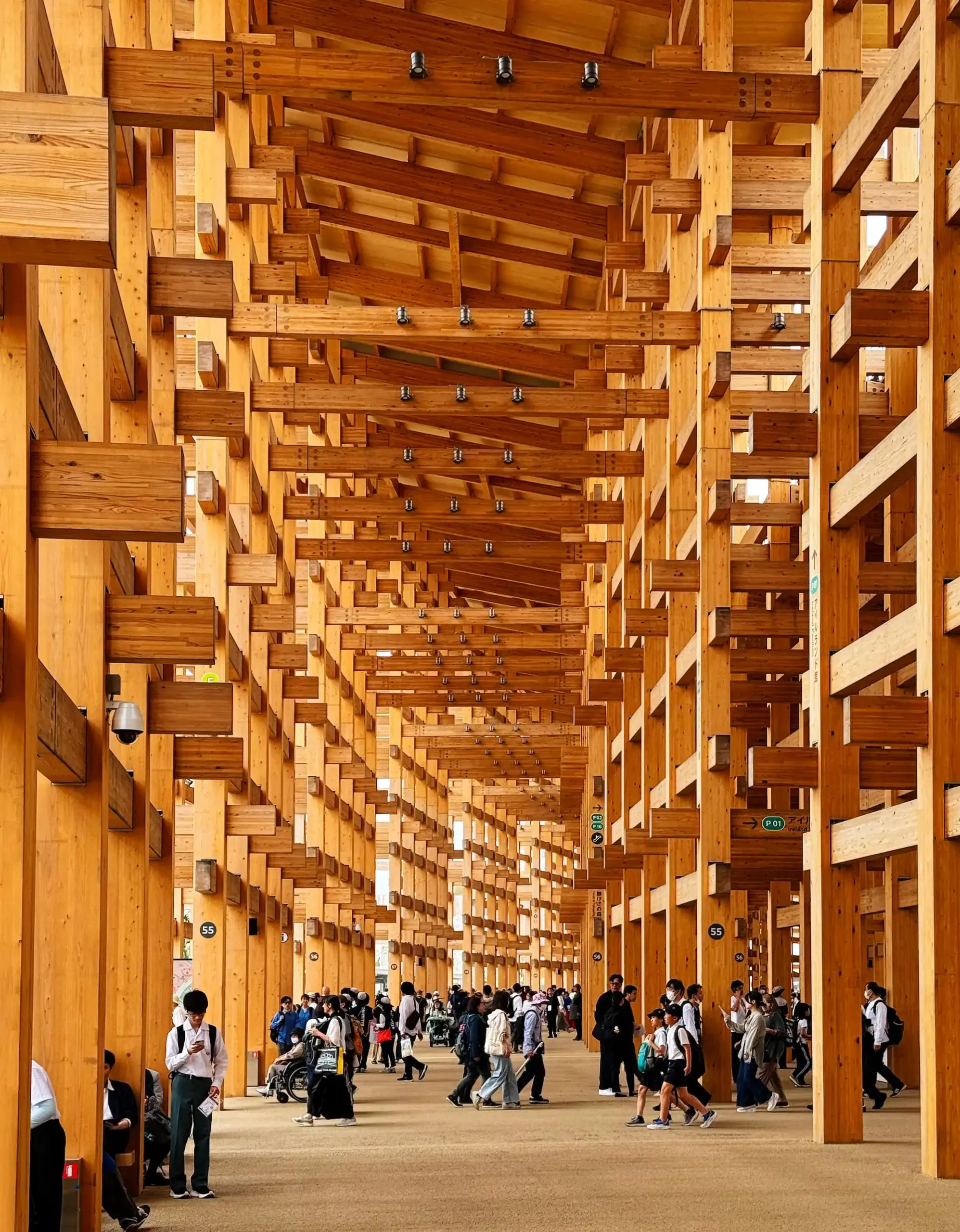unveiling the architectural dream and scale
In the realm of architectural aspirations, Sou Fujimoto’s newest marvel for the Osaka Expo 2025 resembles a kangaroo bouncing on a trampoline—soaring and filled with unexpected delights. This 2-kilometer-long timber megastructure transcends mere building; it stands as a proclamation, a vision of what architecture can realize when it fuses scale with ingenuity.
Fujimoto’s creation exemplifies his knack for thinking beyond conventional limits—or, in this scenario, stepping beyond the usual borders of architecture. Envision a structure so immense it could host a soccer game and still permit a barbecue. The sheer magnitude of this undertaking is sufficient to make any architect’s pulse race quicker than a joey darting about.
The megastructure harmonizes nature and innovation, its wooden silhouette flowing through the terrain like a colossal eucalyptus tree. It’s a daring endeavor, stretching the potential of timber while demonstrating that sustainable materials can be employed on a monumental scale without sacrificing aesthetic appeal.
This focus isn’t solely on size, however. Fujimoto’s vision centers around crafting a space that feels vibrant, a locale where guests can wander and uncover. It pays homage to the splendor of the natural world, encapsulated in an architectural marvel that’s as breathtaking as a sunset over the Outback.
So, the next time you’re enjoying your morning flat white and contemplating the future of architecture, recall Fujimoto’s wooden masterpiece. It serves as a reminder that size is significant, especially when aligned with a vision as boundless as the Australian sky.
eco-friendly design features and ecological influence
In terms of sustainability, Fujimoto’s megastructure is as verdant as a gumtree in the springtime. The design incorporates eco-conscious materials and practices, ensuring that the building is not merely an engineering wonder but also a steward for the environment. The substantial use of timber is not just ornamental; it’s a purposeful choice aimed at minimizing the carbon footprint and advocating for renewable resources.
The structure’s intelligent integration of natural ventilation and lighting systems is brilliant. By utilizing the elements, it curtails energy usage like an astute surfer catching the ideal wave. Solar panels are subtly integrated into the design, absorbing the sun’s energy like a sunbather at Bondi Beach, making sure the structure can produce its own energy.
Water conservation plays a vital role as well. Rainwater harvesting mechanisms are implemented, capturing every droplet like a parched koala in a drought. This not only diminishes dependence on external water sources but also underscores the significance of sustainable resource management.
Beyond its materials and systems, the design of the structure fosters ecological awareness. Its organic shape and relationship with the landscape remind visitors of the fragile equilibrium between human innovation and nature’s offerings. It’s a soft prompt to all of us to walk lightly and think sustainably, even while aspiring for greatness.
Fujimoto’s creation transcends being a mere architectural achievement; it acts as a model for a greener tomorrow. It reflects the notion that beauty and sustainability can coexist harmoniously, much like a couple meandering along the golden shores of an Aussie beach at sunset.
